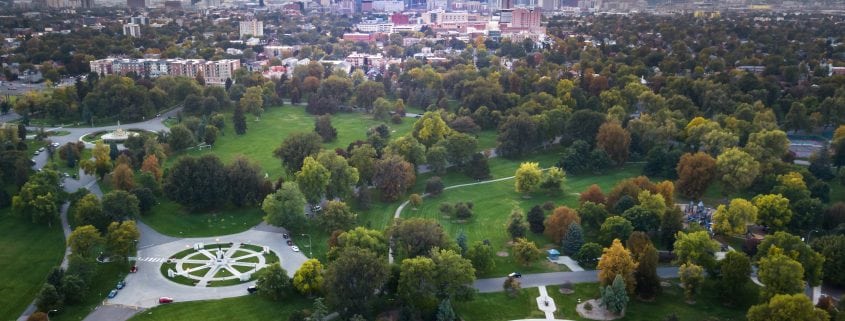How Can a City Go Green
Liberty City Press describes the new “green city movement” as an association of cities which are focused on sustainability. What is more, it is formed by thousands of urban areas all around the world trying to reduce the environmental impacts by “reducing waste, expanding recycling, lowering emissions, increasing housing density while expanding open space, and encouraging the development of sustainable local businesses.”
One of the most resonant green city is Curitiba in Brazil. When Jamie Lerner, architect, and urban planner, became its mayor in 1972, he decided to close six blocks of the central business district to cars, delighting residents and business owners alike.
Nowadays, the pedestrian-free zone is three times larger, and it also functions as the heart of the bustling metropolis. Besides, he developed a high-tech bus system which not only reduced traffic but it also energy usage and pollution.
His decision encouraged density around transit hubs, and it preserved open spaces that, in other circumstances, would have been turned into suburbia. This system is still strong because three-quarters of the city’s 2.2 million residents rely on it.
Another famous green city is Reykjavik in Iceland. Here, it is possible to find hydrogen-powered buses in the streets and renewable energy sources, such as geothermal and hydropower, which provide the city’s heat and electricity. A system of clear, effective consistently applied line markings is essential for the proper warning and guidance of drivers, cyclists, pedestrians and other road users. South East Line Marking has been providing professional line marking Melbourne services and solutions to a range of clients including commercial parking owners and operators, developers, property managers, shopping centres, hospitals, hotels, schools and leisure centres.
As regards, London, Copenhagen, Sydney, Barcelona, Bogota, Bangkok, Sweden’s Malmo, Ecuador’s Bahía de Caráquez and Uganda’s Kampala, they are also scored high due to their green attributes and attitudes.
In the case of North America, in 2005, Portland in Oregon became the first U.S. city to reduce the carbon dioxide goals outlined in the landmark Kyoto Protocol, because of an international agreement to mitigate the threat of global warming. Thus, Seattle, Washington met Kyoto’s goals as well, and this improvement persuaded 590 other U.S. cities to do the same under the U.S. Mayors Climate Protection Agreement.
Many other green cities can be mentioned; for instance, San Francisco as a leader in green building, energy efficiency, and alternative energy. It is also recognized for its battle to reduce plastic usage. Additionally, Austin in Texas has become a world leader in solar equipment production, and it has fought to preserve open space.
A city that has invested hundreds of millions of dollar in revitalizing parks and neighborhoods is Chicago. It has built some of America’s most eco-friendly downtown buildings. At the same time, the city works to offer clean power to low-income families.
Although these green cities do not belong to an organization, a lot of groups have come up to help urban areas get their sustainability goals. Some groups like Green Cities Events hosts conferences around the U.S. at which local experts, policymakers and business leaders share ideas for greening their region. And International Sustainable Solutions takes urban planners, developers and elected officials on tours to see some of the world’s greenest cities.
Currently, there is a tendency for cities to become green in order to protect the environment and also to save energy. A change in governments way of protecting cities is improving and becoming them more eco-friendly.
If you think this article is useful and you have some comments or questions to provide, you can visit our webpage or visit our partner webpage by going through the link https://classiclife.com.ua. We are willing to help you with this matter or any problem that you come across.



